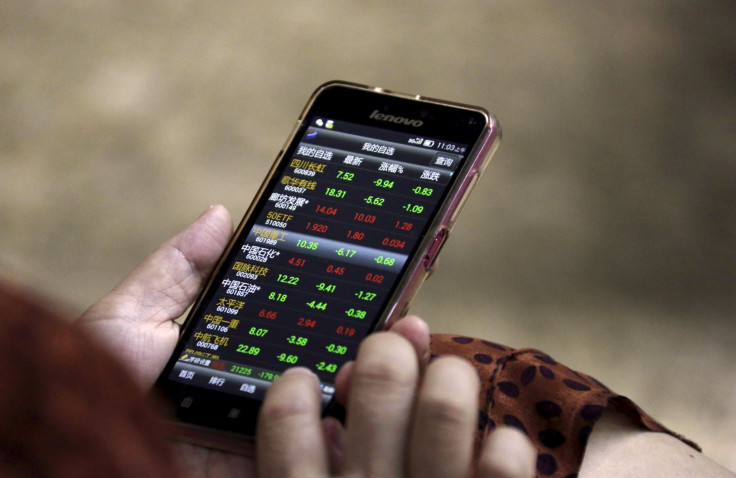Asian Shares Continue To Seesaw Despite China Rate Cut

Update as of 6.10 a.m. EDT: India’s key benchmark index Sensex failed to recover during Wednesday’s choppy trade and closed down 1.2 percent at 25,714.66 points. The country's NSE Nifty index also took a hit, closing down 1.1 percent.
Update as of 2:30 a.m. EDT: Japan’s stock market has closed for the day with the Nikkei 225 ending 3.2 percent higher.
South Korea’s Kospi Composite index and Australia’s S&P/ASX 200 also recovered after a day of volatile trade, closing up 2.6 percent and 0.7 percent respectively.
India’s S&P BSE Sensex, meanwhile, is still in the red, and is trading down 0.5 percent. Meanwhile, the Shanghai Composite index continued to fluctuate wildly -- briefly trading up 4 percent in the post-lunch session only to fall and trade down 1.4 percent later.
Original story:
Asian markets were off to a choppy start Wednesday as China’s Shanghai Composite index continued to fluctuate wildly. India’s S&P BSE Sensex, which shed over 300 points in early trade, recovered slightly as Chinese stocks stabilized, and is currently trading up 0.03 percent.
Japan’s Nikkei 225 was up 2.2 percent and South Korea’s Kospi Composite index rose nearly 2 percent. However, Hong Kong’s Hang Seng Index, reflecting the fluctuation in Chinese stocks, fell 1 percent before recovering some of its losses. It is currently trading up 0.9 percent.
Meanwhile, Australia’s S&P/ASX 200, which ended 2.4 percent higher during Tuesday’s trade, fell 0.8 percent during the day trade Wednesday as the country’s shares came under renewed selling pressure.
The mixed trading in Asia follows Tuesday’s equally volatile session on the Wall Street, where stocks rallied briefly, before falling sharply in the last hour of trading and ending the day in the red.
In China, where the central bank injected fresh stimulus after another rout in stock markets Tuesday by announcing a reduction in interest rates and the banks’ reserve requirement ratio -- that governs how much money they can lend -- the Shanghai Composite index was up 2.2 percent at 3,031 during Wednesday’s day trade. Earlier in the day, the benchmark index opened 0.5 percent up, before seesawing wildly and falling as much as 1.8 percent.
The smaller Shenzhen Composite Index was down 0.2 percent.
More than $1 trillion in market value has evaporated from Chinese equities over the past four trading days, according to media reports.
“They [the People’s Bank of China] probably were not hard enough and strong enough to give the market a sign that they will support it in the next two three weeks, when things are going to get really volatile,” Evan Lucas, a market strategist at Singapore-based brokerage IG Group, told the Wall Street Journal Wednesday. “They [also] haven’t outlined any specific measures to support the mainland market.”
© Copyright IBTimes 2025. All rights reserved.






















